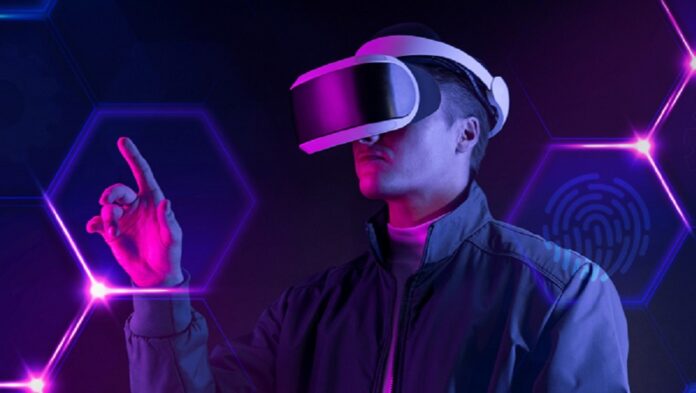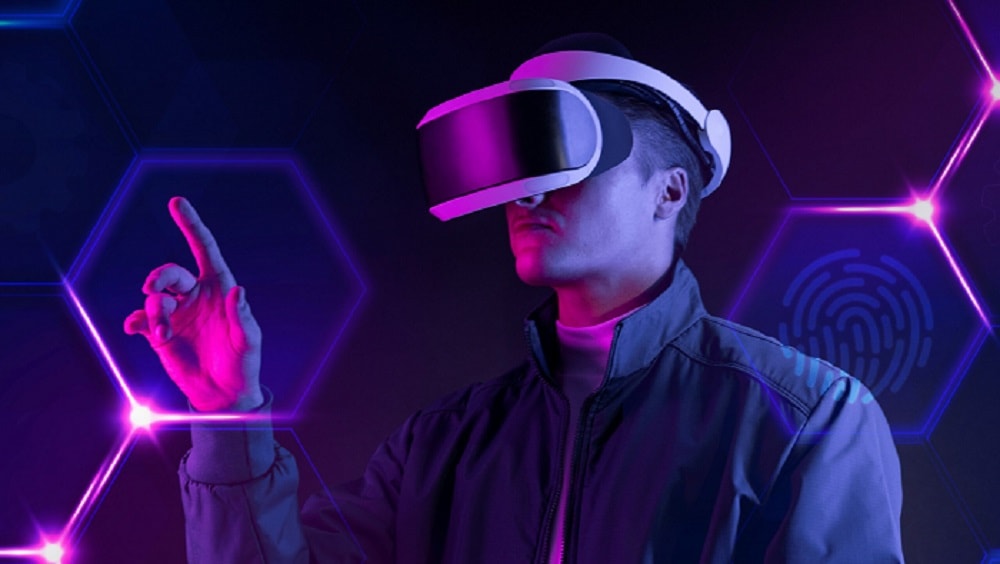
Globally, exponential changes are already happening, and here’s how they will affect the future of the metaverse. Most megatrends are a mix of technology and changes in society. Here are the megatrends that we talked about:
By looking at these 9 megatrends, we can “pull back the camera lens” and get a picture of the bigger picture we’re building the metaverse on.
Virtual Mainstreaming
In the real world, relationships and institutions work because people trust each other. It’s the basis for how businesses work in legal systems, how our money market keeps running, and a way to measure how close we are to each other. Each of these systems can grow because people trust them.
As trust in the “virtual” world grows, with online friends, virtual items and crypto trading assets, smart contracts, and live online experiences.
But there is often a countertrend to every big trend. As people value the virtual world more, those who want to take advantage of it will feel more confident.
Cybercrime is one example that many people are all too familiar with. Some examples are phishing to steal your account information, different online scams, ransomware attacks, and spreading malware.
Because people think that virtual relationships and things are real, online bullying, abuse, cheating in games, and cheating in relationships will all get worse. The number of people doing these things will go up as companies that try to fight crime and abuse put more money into them.
Products won’t solve these problems on their own. It will also take education, training, the ability to use the Internet well, a supportive community, and parents who can understand their kids.

Platforms with Low-Code
Low-code and no-code application platforms (LCAP) replace hand-coding of processes, logic, and applications with higher-level abstractions like visual scaffolding and drag-and-drop tools.
The most obvious benefit of this trend is that some of the work that programmers used to do can now be done by people who are not programmers. But this doesn’t show the full effect or why businesses are using these platforms. Global Top Trend
The automation of workflow, deployment, security, scaling, and integration with different data endpoints is a big part of what makes LCAP “magical.” Most of the time, this is what takes up most of the time when making Internet applications.
The result will not only be a change in who does the work, but also a huge drop in how much work is needed to make apps.
Gartner thinks that by 2023, more than half of all large businesses will use LCAPs to run at least some of their infrastructure.
In the same way, many of these developers are moving toward a serverless architecture (a somewhat confusing term, because usually there are servers, just none that you need to deploy, manage or code yourself).
Machine Intelligence
More and more jobs that used to be done by people are now done by machines. This includes things like deep learning, machine learning, and artificial intelligence.
We live in a world where learning algorithms tune advertising messages, merchandising, and online engagement. We are still in the early stages of processing natural language and recognizing images. In the real world, applications like self-driving cars are just around the corner.
In the metaverse, all of the other trends you see here come together with machine intelligence.
It will affect creativity as computers become partners in the creative process. Just look at how AI Dungeon makes up stories or how Promethean AI can set up a virtual landscape, and think about how much further this will get in the next ten years. AI will be used to make microchips that power the metaverse and to help programmers write code.
Related: Insights From Top Banks on the Future of Crypto
Cybernetics Come of Age
The time for cybernetics has already come. They aren’t spread out as evenly or as well as they will be in the future, nor are they as developed or as amazing.
Cybernetics is the study of how people’s sensory and motor systems can work together with computers. Input/output devices for video games, wearables, mobile phone accelerometers, and VR headsets are already used as examples.
Because of miniaturization and high-speed networking, devices have gone from being stationary workstations to supercomputers we can carry around in our pockets. We are getting closer to these computers.
We’re moving away from looking at computers from the outside and toward a future where we’ll live in virtual space and a world where computers are everywhere.
We might even be able to use light field technology to project photons, along with their depth of field, onto the retina. This would let your eye focus on different parts of a virtual scene, giving you a truly holographic experience. Trending Update News
Challenges by Open Systems
The original goal of the Internet was to be a decentralized network of computers and programs that could talk to each other.
Today, a few very large platforms that act as gatekeepers and toll booths run most of the Internet. Still, new technologies are being made that will help open development grow. WebAssembly (Wasm) promises to give the open web fast, safe, sandboxed binary apps. WebGL and WebXR will help make it possible to deliver graphic and immersive experiences outside of app stores. Platforms like Unity Data-Oriented Technology Stack (DOTS) use these platforms to deliver small, efficient binaries that work well enough for the metaverse (in particular, Project Tiny at Unity).
Adoption of Blockchain
Blockchains, a type of distributed ledger technology, can do for assets and data what Open Source and Open Internet do for software and apps.
Blockchains let people share information without having to trust each other. They also allow for decentralized authority, a record of history and origin, and assets that can be shown to be scarce. When a blockchain is decentralized, anyone can join without asking for permission. It can also be run by a decentralized autonomous organization.
Blockchains are most useful when they can be programmed. Even though not all blockchains can be programmed by design, this is a key feature of Ethereum and other “smart contract” chains.
Why does this matter so much? Again, it’s because of network effects. Reed’s Law says that the value of a network goes up as more nodes can join it. When groups can form around certain activities (games, financial legos, etc.), the value of the network goes up even more.
Network effects have already made it possible for on-chain data feeds (called “oracles”) that can be used as conditions in smart contracts. This has led to decentralized lending, decentralized finance, and decentralized asset exchanges. Some aspects of cloud computing may be replaced by blockchain computing, and the rise of non-fungible assets may become the basis for virtual goods in a new generation of avatar customizations and metaverse game development.
This is just the start of what you can do when you put assets, data, and contracts that can be programmed on the open Internet.
Walled Garden Ecosystems
Walled Gardens and I use this term with love because gardens can be beautiful and well-organized, and benefit from all of the other megatrends that affect the metaverse.
Not every app or the world will be available. Sometimes it’s good for a platform or app to have permission, integration, curation, and control. Roblox wouldn’t have become so popular if it didn’t have all of these things.
In a strange way, the open systems that challenge walled gardens also help them. They use the same open-source software and blockchains as everyone else, and many customers may feel safer in them.
There’s nothing wrong with walled gardens. The problem with the ecosystem of 2021 is that there aren’t enough walled gardens. You should find it easy to make your own walled garden and invite other creators to join, add to it, change it, and connect to it based on the rules you set.
In the future, we might have a structure like hypermedia, where portals connect different worlds and experiences. This would be like links on web pages, but for virtual worlds. For the metaverse, what are hyper portals?
Getting distributed networks to work faster
The speed, concurrent use, and latency of mobile networks will improve by orders of magnitude with 5G networks. And 5G isn’t the end of the line: 6G will make these numbers 10–100 times better. Within a decade, we should be able to get speeds of 10 Gbps and latency of 1 ms or less.
Accelerating speeds are needed for the metaverse to work, but it’s the network effects that happen when everyone in the network can share data in real-time that make for some of the most interesting applications.
As soon as the local network layer stops being the bottleneck, more computing power will be moved directly to the “far” edge of the network. This might happen at a nearby cell tower or right in your own home, where information will be preprocessed and sent to your cybernetic devices.
Most of the AI that powers applications will happen on the edge, because it will be too slow to do everything in a remote or centralized way. In the future, all of the local computers and data feeds will need to work together quickly. This will sometimes mean making predictions at the edge, for use cases in the metaverse where predictions of behavior and physics are accurate enough.
Also Read: Data Science Blog
Simulating Reality
For a long time, almost every 3D game that had real-time graphics did so with a set of hacks called “shader programming.” Ray tracing is a way to simulate how an image looks based on how photons move through and between different materials. Ray tracing can make much more realistic and beautiful images, which is why it is used for pre-rendered content like movies. However, it requires a huge increase in processing power.
But raytracing in real-time is on the way.
It’s just one example of how we’ll make our machines act like the real world. For example, one thing you can do with NVIDIA’s Omniverse platform is simulated fluid dynamics. Imagine being able to show a river or an HVAC system in great detail (which could be used to determine how resilient a building is during a pandemic involving a respiratory disease). Then, imagine that all of these simulations and AI engines are connected to an interoperable framework that lets logic and prediction simulate a world of virtual machines, objects, environments, and people.
The Metaverse is Accelerating.
The metaverse development services will change how we socialize, work, and play. The megatrends I’ve talked about may help you figure out how.
You can keep learning about the metaverse by looking at it from a few more perspectives:
- From the point of view of disruption, especially how Creator Economies change over time, we can see how the metaverse is likely to develop.
- Through the lens of the market’s value chain, which is the structure of how value flows from one industry to another to make metaverse experiences possible.
- From the point of view of the market, which means putting together a list of companies that are competing to make different parts of the metaverse.
[/vc_column_text][/vc_column][/vc_row]













Interesting article..!!!